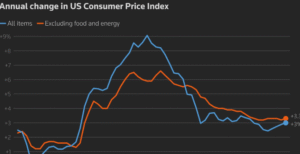$GLD $GC_F $BTC
#Gold #Commodities #Investing #USManufacturing #FedSurvey #Inflation #InterestRates #FinancialMarkets #EconomicData #PreciousMetals #MarketNews #Trading
The gold market is showing signs of vulnerability as it hovers near initial support at $2,600 an ounce. This price level is proving critical amidst widespread uncertainty in broader financial markets. Gold, which is often considered a safe-haven asset during times of economic instability, is struggling to maintain positive momentum despite the U.S. manufacturing sector’s evident weakness. The latest Philadelphia Federal Reserve (Philly Fed) Manufacturing Survey revealed a sharp contraction in December, with its activity index dropping to -16.4 from prior levels, reflecting a deteriorating economic outlook. This disappointing data underscores the ongoing challenges faced by the industrial sector—amid softer demand, elevated input costs, and a murky global growth environment.
Historically, adverse data from the manufacturing sector tends to bolster gold prices, as it increases speculation for less aggressive monetary tightening from the Federal Reserve. However, the current market scenario appears more complex. While gold briefly flirted with gains following the weak data release, it has failed to decisively break higher. A stronger U.S. dollar, in particular, has limited upside potential for the metal in recent trading sessions. Higher yields on U.S. Treasury bonds are another complicating factor, competing directly with zero-yield assets like gold. Traders seem to be weighing mixed signals—on one hand, the weakness in manufacturing diminishes the need for aggressive rate hikes, but on the other, inflation concerns keep the central bank on a cautious trajectory.
Adding to the gold market’s delicate balance are ongoing concerns about Federal Reserve policy. December’s Philly Fed numbers suggest a cooling economy, but the Federal Reserve remains vigilant about inflationary threats. Inflation data has shown signs of slowing, but it remains well above the Fed’s 2% target. If policymakers perceive any risk of further inflationary pressure, they could maintain their hawkish stance longer than anticipated. This would likely put additional downside pressure on gold, as rising interest rates tend to make risk-free assets like bonds more appealing than bullion. Meanwhile, the crypto market—particularly assets like $BTC—has also seen a slight recovery as investors diversify portfolios away from traditional safe havens.
In the near term, the $2,600 level remains pivotal for gold bulls. Should support at this level fail, technical charts indicate the next downside threshold could target $2,550. On the flip side, surpassing that level could trigger bullish momentum, potentially pushing prices toward $2,650 or beyond. Broader market volatility stemming from geopolitical risks, inflation trends, and economic data releases will likely drive gold’s trajectory in the coming weeks. For now, cautious optimism hinges on whether weak economic data will translate into a more dovish Federal Reserve stance, which could help alleviate downward pressures on precious metals. As traders continue to interpret complex macroeconomic dynamics, gold remains at the forefront as a key barometer of global financial stress.










Comments are closed.